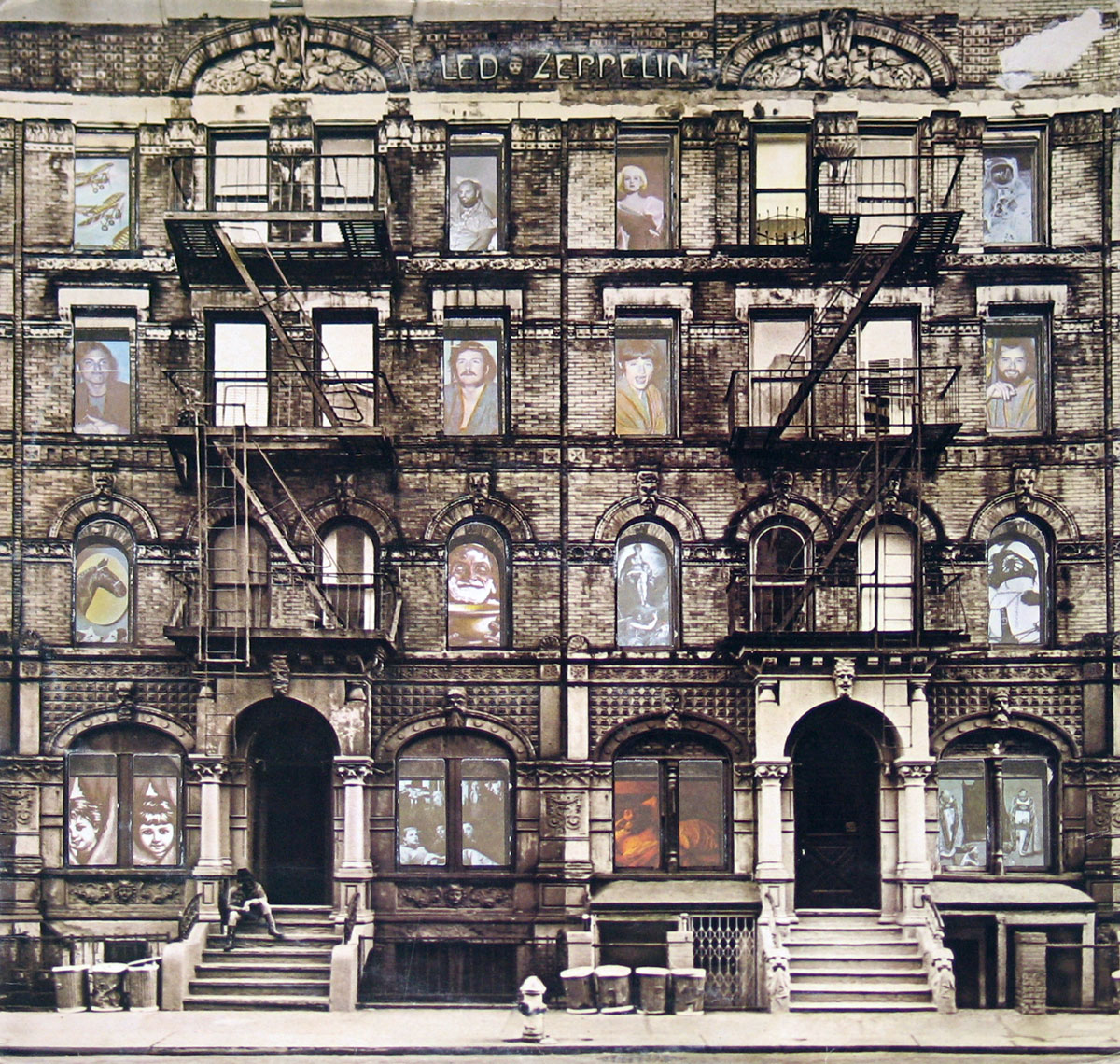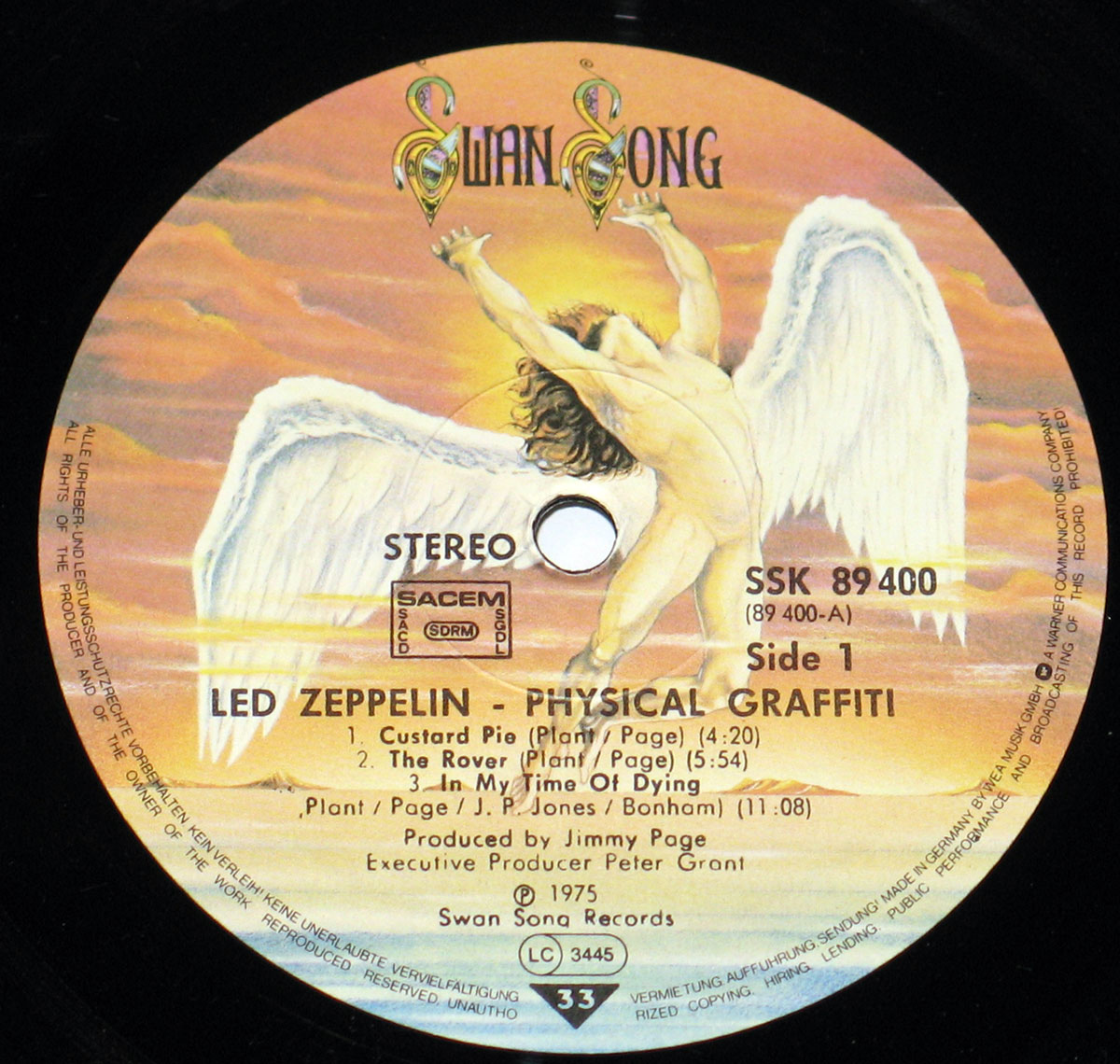"Physical Graffiti" Album Description:
In the vibrant tapestry of music history, few albums have left an indelible mark quite like Led Zeppelin's "Physical Graffiti." Released in 1975, this double LP became a cornerstone of English Prog Rock and Blues-Rock, showcasing the band's musical prowess and innovation. The French release of the 12" vinyl 2LP album added another layer of allure to this iconic musical journey.
The Genesis of "Physical Graffiti"
Produced by Jimmy Page and Peter Grant, the album emerged from the creative depths of Led Zeppelin during recording sessions at Headley Grange, Hampshire, England, in January and February 1974. The unique environment of Headley Grange, an old mansion with a rich sonic ambience, contributed to the album's distinct sound.
"Physical Graffiti" wasn't just a collection of new tracks; it was a musical collage featuring previously unreleased gems from the sessions of Led Zeppelin's earlier albums – Led Zeppelin III, Led Zeppelin IV, and Houses of the Holy. This compilation approach allowed the band to curate an expansive musical narrative, showcasing their evolution and versatility.
Sonic Alchemy at Olympia Studios
The sound engineering prowess of Ron Nevison and the deft hands of sound mixer Keith Harwood at Olympia Studios, London, played a pivotal role in shaping the auditory landscape of "Physical Graffiti." The meticulous crafting of the album's sonic architecture elevated Led Zeppelin's music to new heights, capturing the essence of their live energy within the grooves of the vinyl.
Visual Symphony: Album Artwork
Beyond the auditory feast, the album's visual identity, spearheaded by designer Peter Corriston, contributed to its overall allure. The cover photography by Elliot Erwitt, B.P. Fallen, and Roy Harper, along with the window illustration by Dave Hefferman, provided a striking visual representation of the eclectic musical journey within.
The French Connection
The French release of "Physical Graffiti" on the Swan Song Records label with the catalog number SSK 89 400 added a layer of international charm. The album's reception in France mirrored its global success, solidifying Led Zeppelin's status as a transcendent musical force.
Legacy and Influence
"Physical Graffiti" remains a testament to Led Zeppelin's artistic vision and experimental spirit. Its impact on the music scene during its release period cannot be overstated, as it not only encapsulated the zeitgeist but also pushed the boundaries of what rock music could achieve.
|
Trivia:
The building featured on the front cover of Led Zeppelin's "Physical Graffiti" is located at 96 and 98 St. Mark's Place in New York City. The intricate details of the building, including its unique windows, were captured in the album's cover art. This iconic structure became synonymous with the album, contributing to the visual appeal and mystique of "Physical Graffiti."
Today this is known as the "Led Zeppelin House" and has become a tourist attraction.
View on Google Maps
|
|
Music Genre:
Hard Rock Progressive Rock Music
|
|
Album Production information:
The album: "LED ZEPPELIN - Physical Graffiti " was produced by:
Jimmy Page and Peter Grant
Sound/Recording Engineer(s): Ron Nevison
Ron Nevison is a legendary American producer and sound engineer whose iconic work shaped the sound of '70s and '80s rock. Known for his collaborations with Led Zeppelin, Heart, Ozzy Osbourne, and more, he brought raw energy and polished perfection to countless albums. Learn more in the full biography.
Sound mix: Keith Harwood at Olympic Studios, London.
This album was recorded at: Headley Grange, Hampshire, England during January and February 1974
Album cover design: Peter Corriston
Album cover photography: Elliot Erwitt, B.P. Fallen, Roy Harper Window Illustration Dave Hefferman.
|
|
Record Label & Catalognr:
Swan Song Records SSK 89 400 (89400)
|
|
Album Packaging:
Die-cut Gatefold/FOC (Fold Open Cover) Album Cover Design,
This album includes the original thick paper custom inner sleeve with artwork and photos
|
|
Media Format:
12" Double LP
|
|
Year & Country:
1975 Made in France
|
Band Members and Musicians on: Led Zeppelin Physical Graffiti France
|
Led Zeppelin Band-members, Musicians and Performers
- Jimmy Page
-
Jimmy Page – Guitars
Jimmy Page born January 9, 1944, is a legendary guitarist and the mastermind behind Led Zeppelin’s groundbreaking sound. Throughout the 1970s, his innovative riffs, masterful production, and electrifying live performances helped shape rock history. After Zeppelin disbanded in 1980, Page explored new projects, including The Firm and collaborations with artists like Paul Rodgers. His work in the ’80s kept his influence alive, cementing his status as a rock icon.
- Robert Plant
- Robert Plant – Lead Vocals Robert Plant, born August 20, 1948, is an English rock singer best known as Led Zeppelin’s iconic frontman. His soaring vocals and electrifying stage presence helped define hard rock and heavy metal. After Zeppelin disbanded in 1980, Plant pursued a diverse solo career, blending blues, folk, world music, and Americana. His relentless musical evolution cements his legacy as a rock pioneer who continues to push creative boundaries.
- John Bonham - drums
-
John Bonham – Drums
John Bonham, (1948-1980) was Led Zeppelin’s powerhouse drummer, renowned for his thunderous sound, speed, and groove. His playing defined rock drumming in the 1970s, with tracks like Moby Dick and When the Levee Breaks showcasing his unmatched technique. His explosive energy and innovative style made him irreplaceable. Tragically, his death in 1980 led to Zeppelin’s breakup, but his legacy as one of rock’s greatest drummers endures.
- John Paul Jones
-
John Paul Jones – Bass Guitar
John Paul Jones, born January 3, 1946, was the versatile bassist and keyboardist of Led Zeppelin, whose musicianship shaped the band’s dynamic sound. Throughout the 1970s, his innovative basslines, orchestral arrangements, and multi-instrumental skills added depth to classics like Ramble On and No Quarter. After Zeppelin disbanded in 1980, he pursued production, film scores, and collaborations, cementing his legacy as a rock and musical innovator.
- Ian Stewart - Piano
Ian Stewart- Piano (full-name: Ian Andrew Robert Stewart, co-founder of the Rolling Stones and active band-member until 1963. Later he became their road-manager and guest musician on piano, organ, marimba and percussion and has been performed with many other bands including George Thorogood, Led Zeppelin and others)
- Mrs Valens
|

